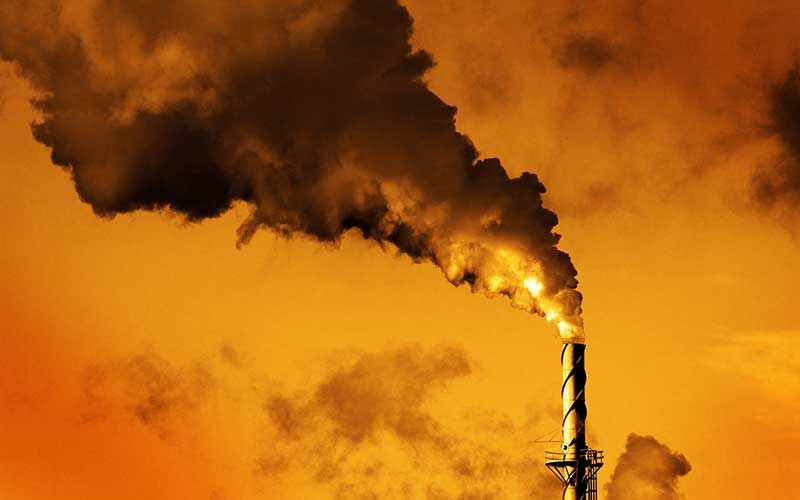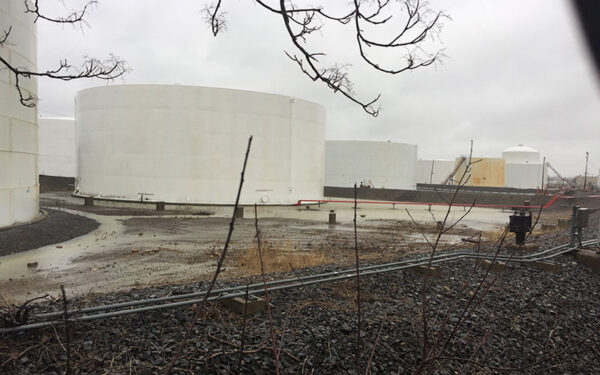
The Supreme Court's decision in West Virginia v. EPA is a setback – but also a reminder of the importance of regional, state, and local action. Photo: Gerry Machen (CC BY-ND 2.0)
Last month, amid an onslaught of Supreme Court decisions overturning major precedents and expanding judicial power, the Court’s new majority hobbled the Environmental Protection Agency’s (EPA) authority to cut climate-damaging pollution from power plants.
The Court’s decision in West Virginia v. EPA strips the federal government of one of its most important tools in addressing the climate crisis: its authority under the Clean Air Act to decide on the best way to reduce pollution from power plants. The decision is the Court’s latest attack on Congress’s use of federal agencies to protect the public. It also signals a broader intent by the Court to disempower those agencies’ responses to major challenges like climate change.
When it comes to climate action specifically, this ruling is a setback, to be sure. But it is also a reminder of the importance of action at the regional, state, and local levels – action that we have been leading here in New England for more than a decade as we waited – and waited – for federal climate rules to come into play.
The work ahead won’t be easy. We have secured laws in five of our New England states that mandate cuts in climate emissions. Now we must make sure that those laws are implemented fully and urgently. The West Virginia decision makes it even more important that we succeed.
How West Virginia v. EPA Started: Obama’s Clean Power Plan
West Virginia v. EPA arose from a challenge to the Obama-era Clean Power Plan, a rule setting the first-ever national limits on carbon pollution from power plants. The EPA developed the 2015 rule using its Clean Air Act authority to select “the best system of emission reduction.” The agency decided that shifting power generation from fossil fuels to cleaner sources like solar and wind would be the best way to reduce emissions – a choice that would seem obvious in the court of common sense as well as a court of law.
Several states – mainly those heavily dependent on fossil-fuel-based industries like coal and oil – challenged the rule, claiming it gave the EPA too much power to regulate emissions. Unsurprisingly, the states’ challenge received widespread support from fossil fuel interest groups.
But by the time the West Virginia case arrived at the Supreme Court, there was nothing for the court to decide, because no rule regulating carbon pollution from power plants was even in effect. The Supreme Court had already suspended the Clean Power Plan before the EPA could implement or enforce it. What’s more, on President Trump’s last full day in office, a federal appeals court struck down a rule developed by his administration that was intended to repeal and replace the Clean Power Plan. At the request of the Biden EPA, the appeals court essentially stopped both rules from going into effect, based on the new administration’s stated intention to replace the Clean Power Plan with an entirely new rule.
Unwilling to wait for the EPA to develop that new rule, the Supreme Court decided to review and opine on the defunct Clean Power Plan – an unprecedented jurisdictional reach.
The Supreme Court Handed the Fossil Fuel Industry a Gift
The Court’s ruling deals a serious blow to the federal government’s ability to fight climate change and control other pollution from power plants and industrial facilities. This gift to the fossil fuel industry – allowing it to continue to spew dangerous climate-damaging pollution into our communities unchecked – will put millions of Americans at risk of more illness, shorter lives, and greater poverty in our overheated climate.
And it is a gift that will keep on giving. The Court’s opinion did not explicitly overturn or even refer to its 2007 decision in Massachusetts v. EPA, which held that the EPA has both the authority and the obligation to regulate climate-damaging pollution. However, the West Virginia majority made clear that from now on it will rein in agencies that are taking on important issues with a broad impact on the economy unless Congress has explicitly approved the agency’s rulemaking approach.
This upends decades of court precedent that gives great deference to an agency’s expertise and its reading of the law. It may prove to be a handy all-purpose tool for the new Court majority to protect corporate polluters at the expense of public health and the environment.
The Court Has Stymied Federal Action. That Makes State and Local Action Even More Critical.
Is the Supreme Court’s decision in West Virginia v. EPA a major roadblock for the EPA when it comes to climate action? Yes. Does it put a hard stop on climate action? Absolutely not.
Instead, it reminds us that we must not only stay the course on state and local action here at home – we must accelerate that action. Over the past several years, CLF and our allies have helped secure new and newly strengthened laws mandating drastic cuts in carbon pollution in five New England states (New Hampshire being the outlier). These laws apply economy-wide, including to sectors like transportation, buildings, and electricity.
However, passing these laws is only the first step in reaching net-zero carbon pollution by 2050. The real test of these laws is in their implementation. We must turn those laws into concrete actions now. That means creating state rules to achieve mandated emissions cuts between now and 2050. It means opening our electricity markets to clean energy and providing clean, low-cost public transportation in our communities. And it means making clean energy technology accessible for everyone through programs like government-based rebates.
It also requires CLF’s unrivaled capacity to hold agencies and polluters accountable in court when they fail to implement the law and act on climate. In fact, the only major rules to cut emissions from power plants that Massachusetts has adopted under its 14-year-old climate law resulted from a CLF lawsuit.
We Are Making Progress Here at Home
Our nation’s highest court has dealt a blow to federal climate policy in West Virginia v. EPA. But there is ample room for hope. Together, we are fighting climate change here in New England. We are developing innovative climate solutions that will benefit our entire economy. We are forging a path to climate justice that ensures no one gets left behind in the transition to a clean energy economy. And we are setting an example for other states across the country to follow.
We can – we will – safeguard an equitable, livable world for our families and our children.



